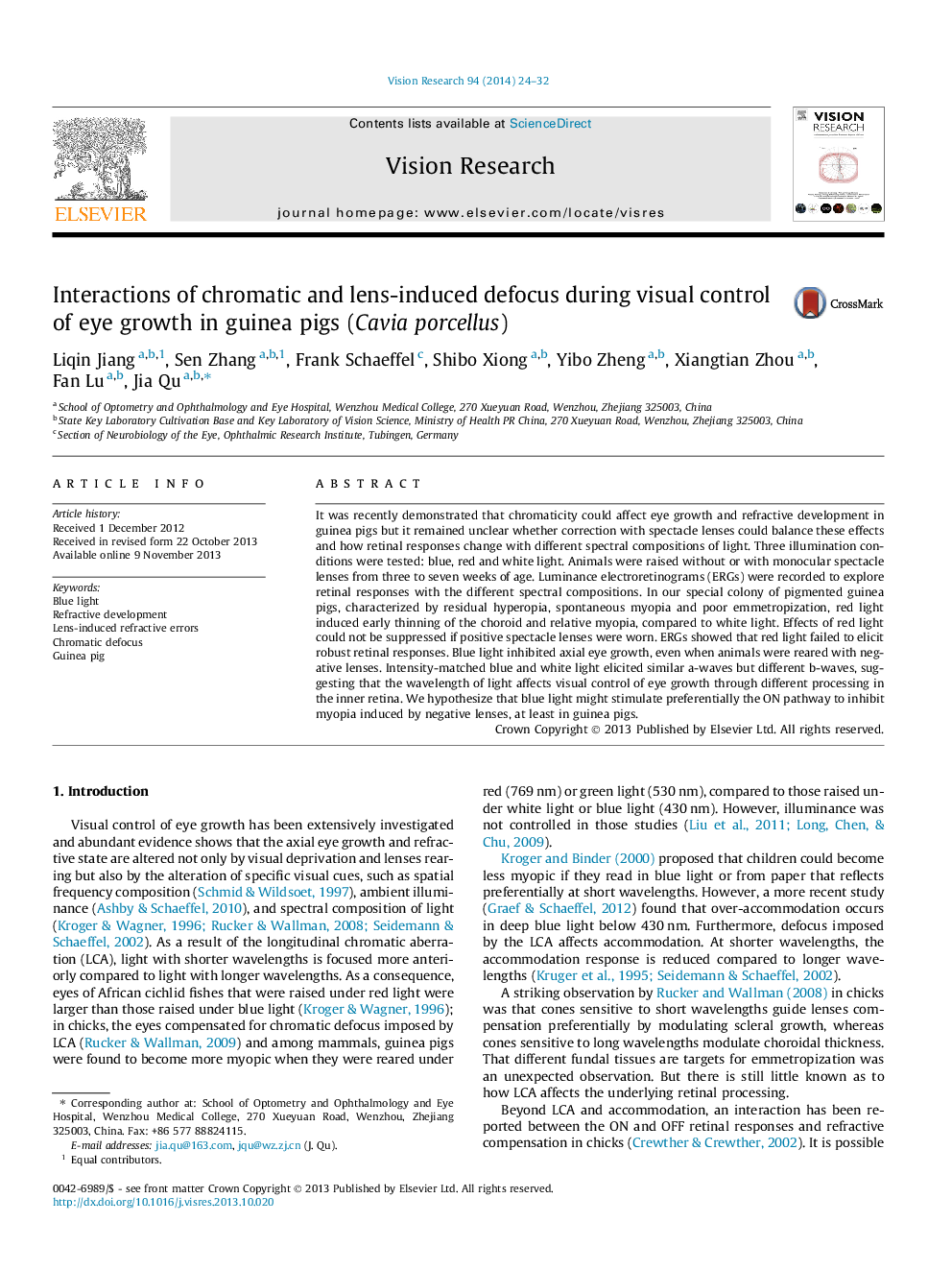| Article ID | Journal | Published Year | Pages | File Type |
|---|---|---|---|---|
| 6203495 | Vision Research | 2014 | 9 Pages |
â¢The choroid of guinea pigs responds to imposed chromatic defocus.â¢The ERG b-wave reflects the differences in chromaticity of light used to imposed chromatic defocus.â¢Red light elicits an ERG with a poor signal-to-noise ratio in the guinea pig, suggesting poor sensitivity.â¢Blue light inhibits eye growth perhaps by enhancing the ON pathway.â¢Even when illuminances were matched by ERG, lenses were poorly compensated in red light, compared to blue light.
It was recently demonstrated that chromaticity could affect eye growth and refractive development in guinea pigs but it remained unclear whether correction with spectacle lenses could balance these effects and how retinal responses change with different spectral compositions of light. Three illumination conditions were tested: blue, red and white light. Animals were raised without or with monocular spectacle lenses from three to seven weeks of age. Luminance electroretinograms (ERGs) were recorded to explore retinal responses with the different spectral compositions. In our special colony of pigmented guinea pigs, characterized by residual hyperopia, spontaneous myopia and poor emmetropization, red light induced early thinning of the choroid and relative myopia, compared to white light. Effects of red light could not be suppressed if positive spectacle lenses were worn. ERGs showed that red light failed to elicit robust retinal responses. Blue light inhibited axial eye growth, even when animals were reared with negative lenses. Intensity-matched blue and white light elicited similar a-waves but different b-waves, suggesting that the wavelength of light affects visual control of eye growth through different processing in the inner retina. We hypothesize that blue light might stimulate preferentially the ON pathway to inhibit myopia induced by negative lenses, at least in guinea pigs.
